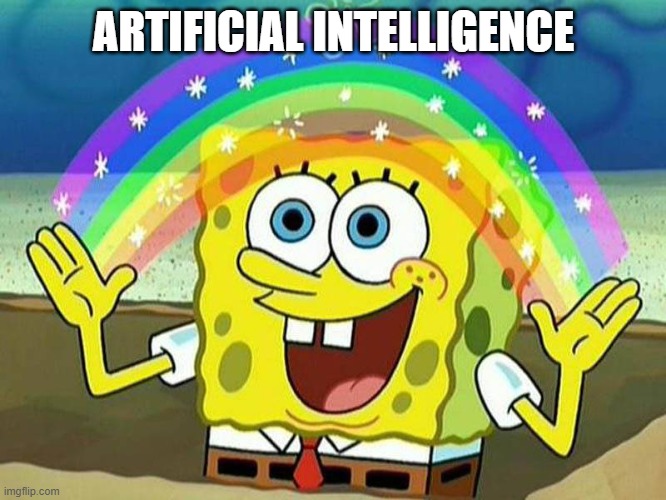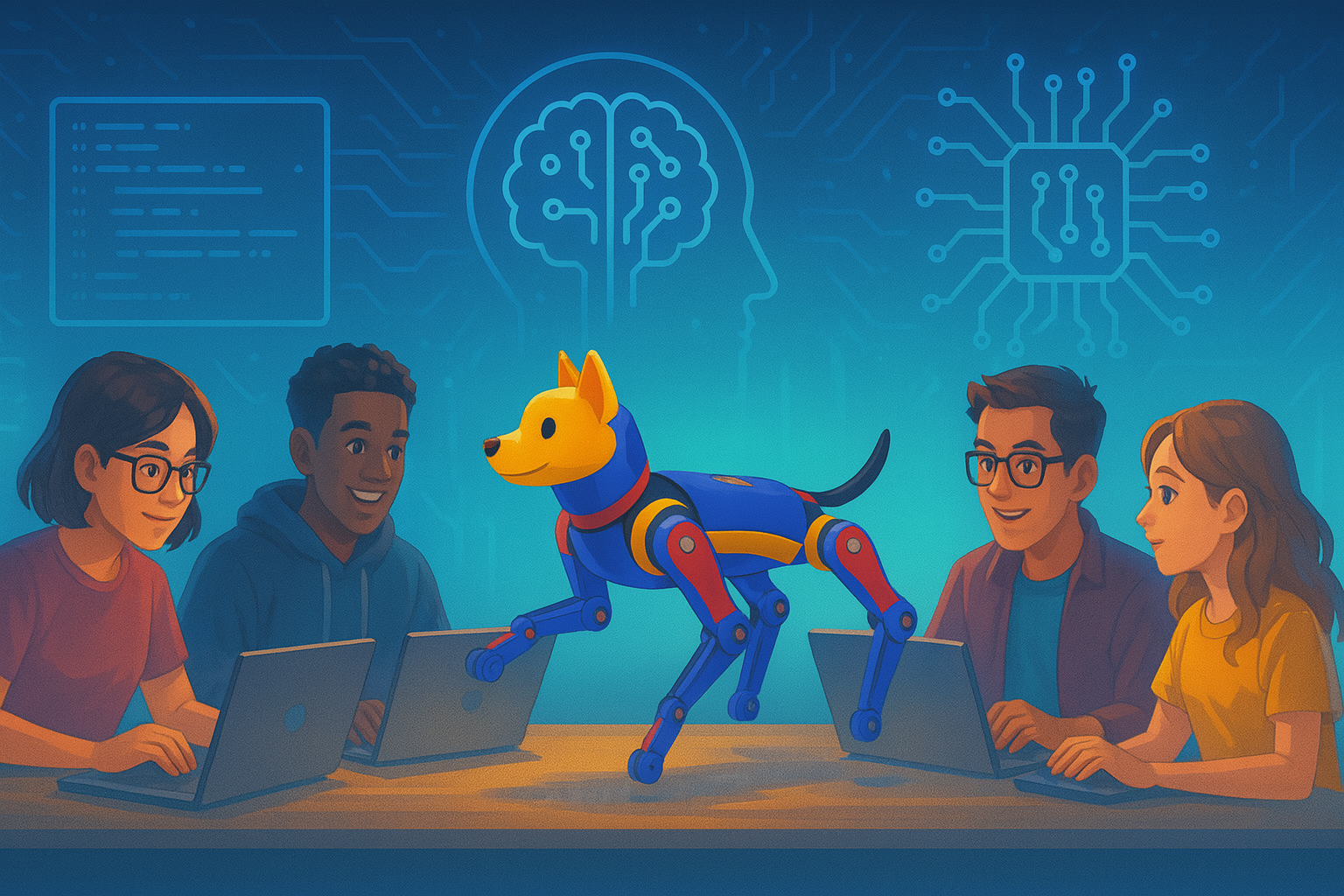You can skip the prologue and hop straight to the core concepts by clicking here. This article is a companion piece to a presentation delivered to PMI Carolinas, which you can checkout here if you’re curious.
Some Background
I generally find LinkedIn, when used correctly, to be a solid platform compared to the rest of social media. So long as you tightly control your followings (you don’t have to follow your Connections), you can find yourself in the midst of relatively valuable conversations about niche sectors of various industries, all of it mostly professional.
And yet, never before has LinkedIn been more of a pompous, pretentious, puffed up, hype-peddling wasteland than it is right now.
And it’s all because of one thing.

I’m a software engineer at a company you’ve likely heard of, and once upon a time, you used to be able to rely on the technical crowd to eschew itself from such nonsense. To speak about how things actually work, about what’s going on under the hood, to lean on the classic hallmarks of software development. Works like…
- Donald Knuth’s The Art of Computer Programming.
- Robert C. Martin’s (affectionately called Uncle Bob) Clean Code.
- Industry legends Kent Beck and Martin Fowler’s Refactoring.
- Andy Hunt and Dave Thomas’s The Pragmatic Programmer.
- Design Patterns by the venerable Gang of Four.
…and more. No matter how many new languages or frameworks or paradigms would come out, the core fundamentals of computing and software would remain the same.
But given the risen of AI, I’m here to tell you that…

…ALL OF THAT IS STILL TRUE!
That’s right ladies and gentlemen. Building software is still hard. LLMs can’t do it totally devoid of human involvement.
The do more with less CEOs, since the emergence of Generative AI in 2022, have finally…hopefully…learned their lesson. The rise of AI doesn’t mean you can axe your entire IT division, as Klarna had to learn the hard way.
In fact, with the rise of Agentic AI, you need your IT division to upskill.
Don’t just take my word for it. Both McKinsey and Bain, whose consulting wisdom 🙄 has shaped the Fortune 500 for decades, are running around telling CEOs the same thing.
You can’t just spin up an Agentic AI solution from Microsoft, Google, or Amazon and expect it to work magic out of the box. Despite what their marketing teams might suggest, there’s significant complexity under the hood that needs to be understood and properly configured.
The Show Goes On
Agentic AI’s ascension, which misinformed plebeians have taken to mean “it’s over for software developers”, has only increased the need for technical individuals to piece together multi-modal, multi-agent, distributed, scalable, cost-efficient, low-latency, federated systems that can do more than just be a chatbot.
And so, I present to you a meme from this iconic scene in The Wolf of Wall Street. One that perfectly captures the cathartic declaration of defiance that we, the technical workforce worldwide, have been needing since 2022.
That fateful year when everyone and their mama who knows nothing about software development decided our entire industry would be gone “any day now” because they vibe coded a to-do app in 30 seconds.
For each and every one of us, I say to you…

…and, like Leo’s character in that same scene after finishing his speech, I am, at the present moment, feeling like…

But all this raises the question: what is Agentic AI? Like…what is it really?
The Rise of Agentic AI (And Why Everyone’s Confused)
Agentic AI is being pushed so hard by the LinkedIn clout-chasing crowd that you’d think they’re all decades deep into understanding it.
But alas, such is not the case.
I can tell you confidently that even among developers, there isn’t uniform understanding of precisely what is meant by Agentic AI.
The terminology surrounding it is confusing. The lines between it and Generative AI chatbots like ChatGPT are blurry. The exact difference between something being Agentic and traditional automation we’ve had forever isn’t abundantly clear.
Meanwhile, the business folks are under immense pressure to sell Agentic AI as the promise of AI finally made real. Anything to justify the absolutely insane capital expenditures of building out data centers and buying up GPUs.
They’re talking ad nauseam about Agentic AI while themselves not really understanding what it is. And honestly, I don’t blame them. They’ve got bosses pushing them to “sell, sell, sell!” and thus must hit the road to push tech that most developers don’t fully understand how to build with yet.
And so, I write to inform. Let’s move from confusion to clarity together.
What Agentic AI Is
Agentic AI is AI that can make decisions and take actions independently with minimal human oversight.
It’s given a mission, not a conversation. Once you set the goals and guardrails, it plans, decides, and acts autonomously.
Sounds simple enough, right? Not quite.
A viral Twitter thread asked the tech community to crowdsource a definition of “agent” that could fit in a tweet. Engineers, researchers, developers all chimed in. No consensus emerged.
The Hacker News crowd is similarly struggling to pin down exactly what an “agent” is. There are litmus tests being proposed and debates raging. But one authoritative voice has emerged above the noise.
Anthropic, the company founded by former OpenAI employees, has become such a force that Microsoft told OpenAI “we’re not exclusive anymore” and welcomed their Claude models into Copilot. When they speak about AI, people listen.
Here’s how Anthropic defines an Agent:
Workflows are systems where LLMs and tools are orchestrated through predefined code paths.
Agents, on the other hand, are systems where LLMs dynamically direct their own processes and tool usage, maintaining control over how they accomplish tasks.
That’s a great technical definition. Let me try my hand at an “everyday” version.
Generative AI is reactive. It’s prompt and stop. You ask, it answers, it’s over.
Agentic AI is proactive. It’s plan and act. You give it objectives, and it figures out how to achieve them, taking multiple steps across different systems if needed.
Aside: Agentic AI often uses Generative AI behind the scenes, but saying “Generative” for stuff like chatbots and “Agentic” for autonomous systems is simple and what the industry has adopted.
These definitions aren’t perfect, and I’m sure someone somewhere is itching to hit me with a “well ackchyually”, but I think they’re sufficient to understand the gist of what’s going on.
What Agentic AI Isn’t
Now, given the sheer amount of confusion still out there, let’s be crystal clear about what isn’t Agentic AI. Sometimes figuring out what something isn’t helps you understand what it is.
- A chatbot is not an Agent.
- An automated script is not an Agent.
- A scheduled email is not an Agent.
- A Zapier workflow is not an Agent.
- A Power Automate flow is not an Agent.
- A cron job is not an Agent.
- A GitHub Actions workflow is not an Agent.
- An Excel macro is definitely not an Agent.
And for good measure, College Park is not Atlanta. Sorry, not sorry.

The Power and the Peril
All those things I listed follow predetermined rules. They don’t reason, they don’t adapt, they don’t make judgment calls. They’re automation, not autonomy.
An Agent, true Agentic AI, can look at a situation, understand the context, make decisions based on goals you’ve set, and take actions. Sometimes actions you didn’t explicitly program it to take, but that make sense given its mission.
If you’ve read this far and had a moment of “wait, if that’s what Agentic AI is, isn’t that kind of dangerous? Aren’t you guys letting the system go off and connect to things and do stuff and control things when we know AI itself isn’t sentient so it’s not like it really knows what it’s doing?”
Yes. Yes, you are right, and I applaud you for thinking that way. We can be friends.
Agentic AI is powerful, but also incredibly dangerous if you don’t set things up right. You should read these articles.
- Anthropic - Agentic Misalignment: How LLMs Could be Insider Threats
- MIT Technology Review - Why Handing Over Total Control to Agents Would Be a Huge Mistake
- MIT Technology Review - Cyberattacks by AI Agents are Coming
And to drive home my point, Microsoft is out here encouraging people to try out “vibe working” using Agent modes in their various products, like that isn’t the exact thing those aforementioned articles are talking about being a bad idea. There is no “vibe working”. Don’t do that. Don’t be a “vibe worker”, that’s the first step to being an “unemployed worker”, like what are you doing fam.
Key Acronyms Explained
We’ve covered what Agentic AI is and isn’t. Now let’s talk about some of the acronyms and concepts you’ll encounter when building or working with these systems.
-
GPT (Generative Pre-trained Transformer): The AI model that started the present AI revolution. Creates new text by predicting what comes next using patterns learned from data. That “T” stands for Transformer, invented by Google in 2017 in the iconic paper “Attention Is All You Need.”
-
Context (not an acronym, but crucial): The surrounding information that gives meaning to what’s being discussed. AI uses context from conversation history, relevant data, and the current prompt to understand what’s really meant, not just the literal words. A context window is how much info the AI can remember at once, its “short-term memory.” Larger windows mean better understanding of long conversations and documents.
-
MCP (Model Context Protocol): A standard way for AI to connect to different tools and data sources. Think of it as USB-C for AI. One connector for everything. Anthropic created it and everyone supports it now. It’s the standard.
-
RLHF (Reinforcement Learning from Human Feedback): How ChatGPT got so good. Humans rate AI outputs, and the AI learns from that feedback to be more helpful and less harmful. Invented by Paul Christiano while he was at OpenAI.
-
GANs (Generative Adversarial Networks): Two AIs compete. One creates fake content, the other tries to detect it. Through this competition, both get better. Invented by Ian Goodfellow in 2014.
-
NLP (Natural Language Processing): The field that lets computers understand human language, whether written, spoken, or even emojis and slang. Been around since the 1950s.
-
LLM (Large Language Model): The foundation of modern AI. Trained on massive text collections with billions of parameters to predict what comes next.
Agentic AI Platforms
Listen. Listen to me.
The Agentic AI world is moving absurdly fast. By the time this post goes live, something here might already feel dated (I’m exaggerating…barely).
What follows are the platforms that currently matter in enterprise scenarios. Think end-to-end offerings, not just frameworks. Honorable mentions to CrewAI, LangGraph, LlamaIndex, and Atomic Agents.
- LangChain: Open-source, industry standard for agent orchestration.
- Azure AI Foundry: Pro-code platform for enterprise agents with built-in governance.
- Microsoft Copilot Studio: Low-code/no-code visual builder for business users as well as developers. Making building agents a click, drag, and drop experience.
- Amazon Bedrock Agents: Pro-code API-based agent development. Developers write code to connect AWS services and Lambda functions.
- Google Vertex AI Agent Builder: Low-code platform using Google’s Gemini models. Visual interface for building agents with RAG and tool calling.
- Salesforce Agentforce: Low-code agent builder for CRM workflows. Click-based configuration with pre-built templates for sales and service.
If you’re interested in the skills needed to build Agentic AI systems, check out my AI Engineering guide. AI Engineering is the emerging field for those who build this stuff. That’s what they’re calling the industry. You could call it Software Development, because that’s what it is, but I guess AI Engineering sounds cooler.
Essential Reading
Here’s some good stuff. These articles will get you up to speed on Agentic AI, and really AI in general, from the fundamentals to the cautionary tales to even more terminology worth knowing.
- Latent Space - The Rise of the AI Engineer
- Conrad Irwin - Why LLMs Can’t Really Build Software
- MIT Technology Review - Why Handing Over Total Control to AI Agents Would Be a Huge Mistake
- MIT Technology Review - Cyberattacks by AI Agents are Coming
- Anthropic - Agentic Misalignment
- Cerbos - The Productivity Paradox of AI Coding Assistants
- ShiftMag - The Illusion of Vibe Coding
- Microsoft - 10 AI Terms Everyone Should Know
- Microsoft - 10 More AI Terms Everyone Should Know
- IBM - Agentic AI vs Generative AI
- Forbes - Generative AI vs Agentic AI: The Key Differences
A Final Note
There are very few seasoned experts in Agentic AI right now. We’re all figuring it out together. The technology is moving fast, but the fundamentals remain the same. You need humans who understand systems, can set boundaries, and know when the AI is hallucinating nonsense.
Agentic AI is powerful. It’s also dangerous if you don’t know what you’re doing. But if you take the time to understand it, to learn the tools and concepts, you’ll be part of building the future instead of being replaced by it.
The show goes on, my friends. The show goes on.




